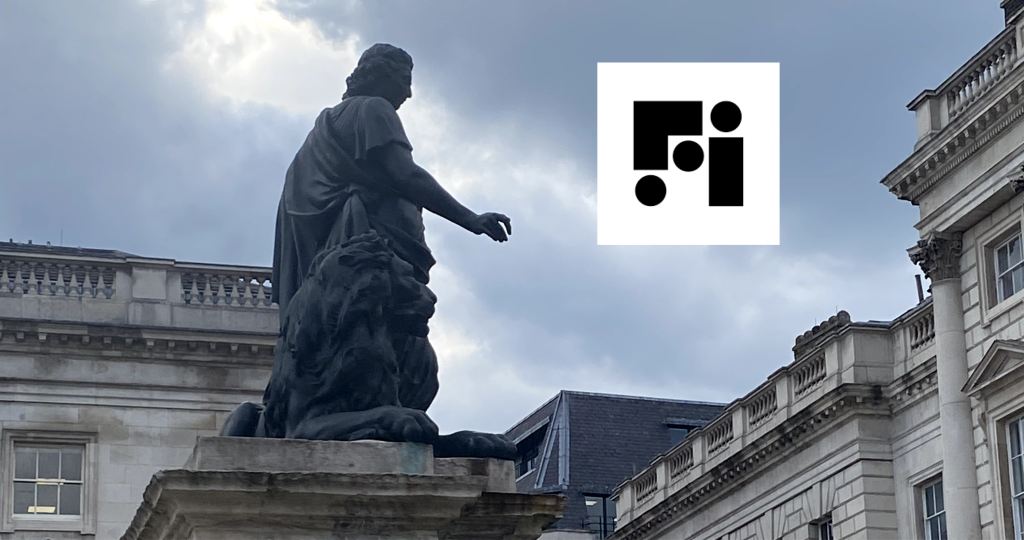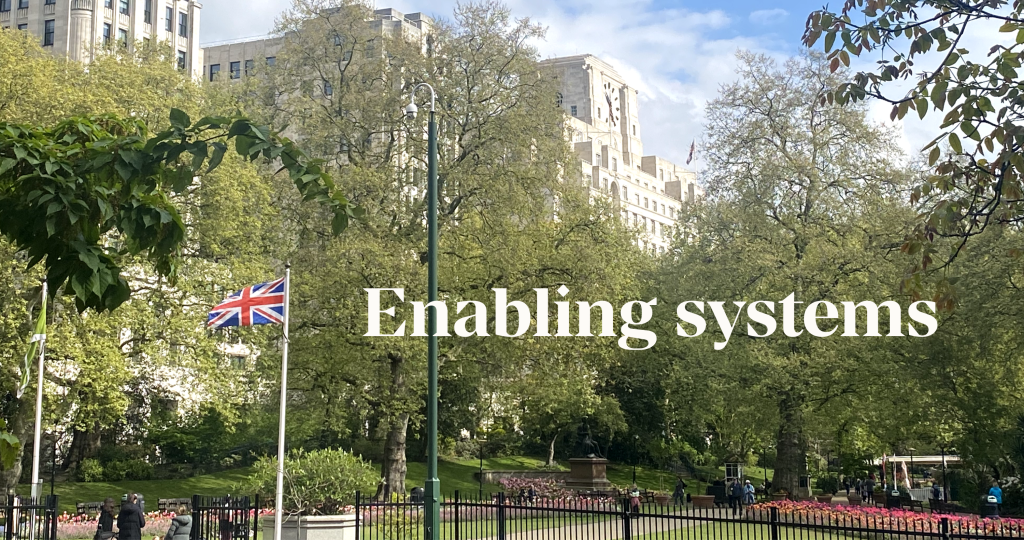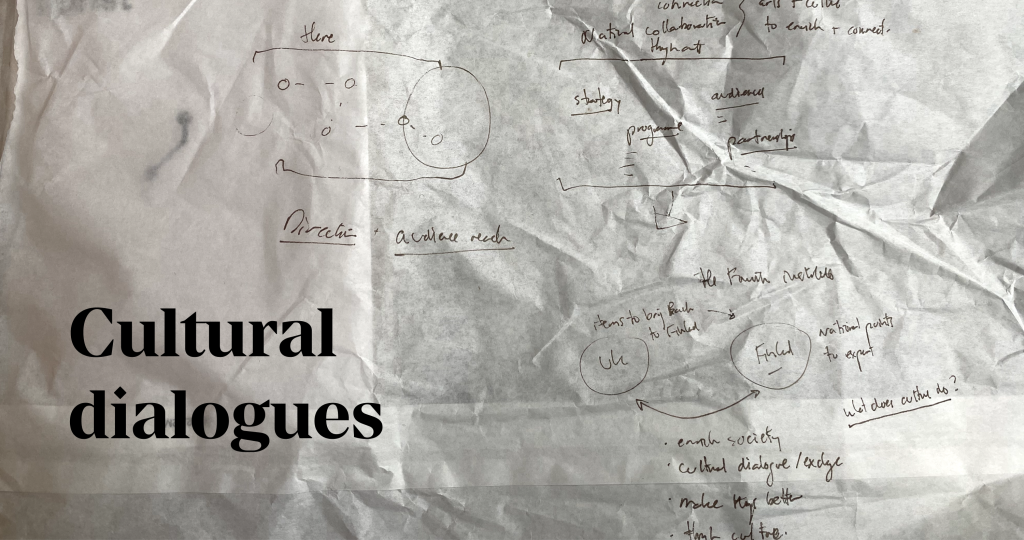The design of a cultural institute
A reflection on the evolving role of cultural institutes. Exploring how design, governance, and collaboration shape their impact, sustain their relevance, and position arts and culture as a vital platform for dialogue and exchange.

Asking the right questions: new forms of design in culture.
When I became a trustee for the Finnish Institute in the UK & Ireland in 2020, my first question was why wasn’t there more collaboration between institutes. I compared it to a “national team of culture.” We were representing Finnish culture internationally, yet the extent of collaboration varied. There were many reasons why cooperation was possible, or not, and over time I saw shifts towards working together where it added value, while also recognising the importance of local relevance.
The changes in how a cultural institute functions have been vast. Over the past five years, the UK & Ireland organisation has navigated the pandemic, Brexit, and questions about the future of Finnish national cultural funding. These experiences have shaped my and the team’s understanding of how a cultural institute is designed. How it is built, sustained, and reimagined. These reflections are about governance, but more importantly are about the collective effort of those who have worked to strengthen, design, and expand the ways in which an institute engages with art, culture, audiences, and national exchange.
Designing for continuity and change.
A cultural institute is shaped by those who develop its structures, and when required, bravely rethinks how it operates. Change happens through examining what needs improvement and imagining how those changes could be positively different. Designing an institute also means designing for a sustainable legacy, ensuring that the work that’s made today creates lasting value.
The design of an institute sometimes calls for continuity and at other times, disruption. Structures have needed adjusting to reflect changing circumstances. A shift in direction has often come through conversation and the willingness to ask whether the institute is developing as well as it could.

Challenging and strengthening structures.
Bringing in new ways of working has been essential. Change has taken the form of strategic decisions in hiring new team members, including programme directors, new institute directors, appointing a new chair, and rebuilding the team of trustees. These shifts have shaped leadership and the way the institute collaborates and operates. An organisation is strengthened by who is involved and by the systems that enable them to work effectively. Governance has expanded beyond oversight, becoming more engaged and, when necessary, more hands-on to ensure that expertise is put to use.
Structures do not exist for their own sake. They should provide clarity and ambition, creating space for collaboration and enabling the institute to respond to opportunities. Sometimes, a small initiative can cascade into the potential for much larger impact than anticipated.
New processes have helped teams work better together, particularly across different locations. The institute is shaped by both its board and its London-based programme team. There’s an ongoing opportunity to align these two groups while recognising the different perspectives and responsibilities that each brings. This work has required stepping beyond formal governance and engaging in the practical details that help an organisation function well.
Expanding perspectives and relationships.
Cultural organisations exist within a broader landscape of networks, institutions, and funding structures. Some of the most valuable changes have come from working with new stakeholders that broaden our perspectives, and increases the institute’s reach. Expanding these connections has strengthened its position within the wider cultural sector, making it a more relevant and valued partner.
Political engagement has also played a role. Strengthening relationships with other institutions, embassies, and funding bodies has been critical to the institute’s long-term development. A cultural organisation benefits from openness to new conversations, partnerships, and ways of working that help it to evolve.

Arts and culture as a platform for dialogue.
A cultural institute is more than a presenter of artistic work. Arts and culture create space for dialogue, offering ways to explore complex issues that other sectors cannot approach in the same way. While certain industries focus on systems, scale, and efficiency, cultural work is rooted in human experience. It connects people to ideas on both an emotional and intellectual level, raising critical questions in ways that have the ability to deeply resonate with audiences.
At its most powerful, a cultural institute becomes a forum for perspectives to meet, a space where difficult subjects can be addressed through creative expression. Whether through exhibitions, performances, or public discussions, it helps topics to be examined from different angles, creating understanding that cannot be achieved through policy or industry alone. It’s about participation, shaping the way topics are perceived, discussed, and felt.
This ability to engage at a human level is what makes the arts essential in addressing societal challenges. A cultural institute can actively contribute to public discourse, highlighting the role of culture in questioning and imagining new possibilities.
The role of design in shaping an institute.
Design is often associated with tangible elements such as visual identity, space, form. But it also operates at a structural level, shaping how an organisation functions and how it enables people to do their best work. Design is about creating systems that support clarity and focus while leaving room for adaptation. It can inspire new ways of thinking and create positive change. The challenge is finding the balance between ambition and feasibility, ensuring that an institute remains both visionary and grounded within the resources that it has available.
The design of a cultural institute is about elevating the human experience, creating the conditions where individuals, ideas, and artistic work can reach their full potential. It’s also about national exchange. The movement of ideas, knowledge, and artistic perspectives between cultures. Design shapes the structures that allow for these exchanges to happen, making them meaningful and impactful.
Looking ahead.
An institute is always shifting, always responding. Designing for this type of development means ensuring that strategy and operations remain connected, that ambition is matched with the ability to deliver, and that structures remain flexible enough to accommodate change.
The question remains: how should a cultural institute be shaped for the future? How can it continue to create value, not just in what it presents, but in the way it is built and sustained? These are the questions that will continue to shape its design.